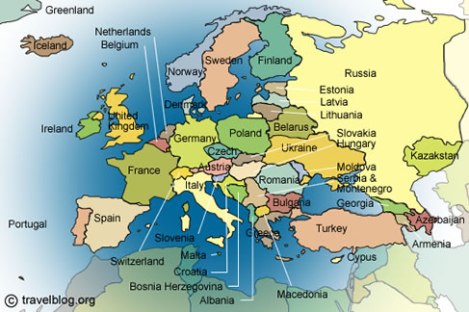This assignment was the first time in my life that I had ever carried out ethnographic research intentionally. By that, I mean that I have never undergone an attempt to produce any kind of ethnographic study. However, every day we are ethnographers in some way. When we travel at all, or meet new people, we are participating in this field, because we are learning about different cultures and ways of life. Even a walk through the center of my hometown can provide me with observations that teach me things about the area and its people.
Little Italy today is primarily a tourist destination. This makes sense, as the number of Italian immigrants to America plummeted after World War II and is virtually non-existent today. While once a bustling residential area, today the crowds are from places like Wisconsin and Ohio. Say hello to all the tourists!
I guess you could consider tourists from Wisconsin to be getting a great cultural experience here, regardless. After all, how many Italians live in Wisconsin? Not many as far as I know. My studies of Italian immigration patterns actually taught me a great deal about immigration in general, and where various groups tended to settle. Wisconsin, like most of the midwest, is full of Germans, Swedes, Dutch, and other similar groups of people. The map below is a great resource for seeing which nationalities picked which parts of the country to settle in.
Italians, you can see, are the number one ethnicity only in parts of New Jersey, New York, and Connecticut, likely because descendants of immigrants in New York City made their way out to the surrounding suburbs in years following the large boom of Italian Immigration. Interestingly, many southerners simply checked off “American” as their ancestry. This is likely because few immigrants settled in the south for many years, and most people who live their now can trace their roots all the way back to colonial times. Many southerners probably have no idea what their heritage is, because it has been so long.
Ethnographic research can get much more complex, too, and inferences can be made about certain areas based on data surrounding specific topics. For instance, the map above shows us the top religion in each county in the USA. The main reason why the northeast is so Catholic, of course, is because of the large numbers of Italian and Irish immigrants who came here in the 19th and 20th centuries. The large number of Lutherans in the upper midwest is due to the regions strong German heritage. The religion, language, and overall culture of any place can teach us a lot about the people who live there.
All of this information is relevant because it is part of what ethnographic research is: looking at all of the various demographic information that makes up a given area. Even though my neighborhood is Little Italy, the people who came to this neighborhood and lived there for many years also left eventually, as did their children and grandchildren. Italians fanned out across the country, spreading their culture as well. This happens with every immigrant group, and will continue to happen with other groups in the future.
You don’t have to be Italian at all to enjoy Little Italy. I saw many people in the neighborhood who were not Italian, and it is usually easy to tell. One thing I did notice, however, is that the neighborhood is primarily white. Most of the visitors are also white. I think this may be because the people who visit are Americans of primarily European descent, who feel as though they can relate to the history and legacy of Italian immigrants as a result of this. Even if one is not Italian, their ancestors may have come to America from Germany or Ireland, and so the background and story is similar.
Back when Italians were immigrating here in full force, most of them were not even seen as white. Today, I don’t think white people make much of a distinction between various nationalities. You are either white or you’re not. Similarly to how Hispanics are not a race, but an ethnicity, I think that many of them will blend in with the overall population over time and will be seen as white. Not that it should matter, of course, what race someone is. But I do find it interesting how the definition of what our society considers to be what “white” has changed over the years. Little Italy is full of different nationalities, but because they are all European, most Americans would not consider it to be very diverse. A visitor from Europe, however, would be shocked at the amount of diversity, because they are used to being around people of all the same nationality back home.
Linguistically speaking, there were some old people in the neighborhood who still sit out and speak Italian. A lot of the signage is in Italian because it adds to the flavor of the neighborhood. However, few Americans speak Italian, and pretty much everyone there spoke English. Little Italy has become a tourist destination in the middle of lower Manhattan, and little more than that. It is a great cultural experience, but it is shrinking and not really attracting any new immigrants to keep it alive. I do hope, however, that preservation efforts are able to keep it intact for future generations to see.




Leave a comment